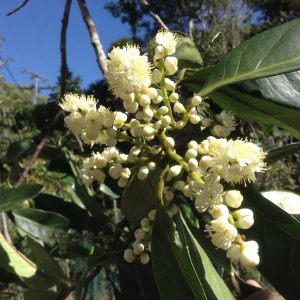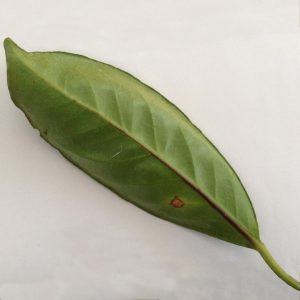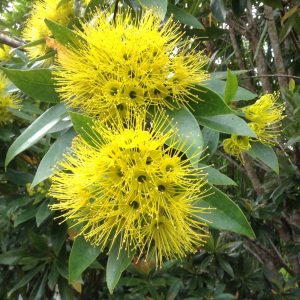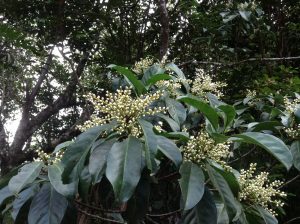WHITE HAZELWOOD Simplocos chinchinensis
 When in bloom, usually any time from April through June, the White Hazelwood tree (Simplocos chinchinensis,) is eye-catching crowned with a dense display of fluffy, white flower panicles. The flowers have a delicate fragrance and attract insects and birds. One of these trees is at present (early June) in full bloom and may be seen at the southern gate of the High Ropes course. There are several of these trees scattered around the village and along the sides of the Ridge Road near Paluma. Not all are yet in bloom.
When in bloom, usually any time from April through June, the White Hazelwood tree (Simplocos chinchinensis,) is eye-catching crowned with a dense display of fluffy, white flower panicles. The flowers have a delicate fragrance and attract insects and birds. One of these trees is at present (early June) in full bloom and may be seen at the southern gate of the High Ropes course. There are several of these trees scattered around the village and along the sides of the Ridge Road near Paluma. Not all are yet in bloom.
Symplocos is one genus with approximately 250 species around the world and in Australia, there are 15 to 20. Wendy Cooper, in “Fruits of the Australian Tropical Rainforest’ lists 17 species which occur in tropical Queensland. The tree can grow to about 30 meters high.


The tree is not easily identifiable by its trunk and lower branches which have lightly textured bark. Like so many rainforest trees, the bark is mottled with lichen, camouflaging the surface with splotches of white, tan and green. The leaves however are distinctive. Mature leaves are elliptic in shape, are leathery and a dark, almost black, green and can be 70 -200 mm long and 7 -25 mm wide. Veins are well defined, giving the leaf an almost quilted appearance and the underside has a prominent purple mid-rib.
The flowers are tiny, with 5 white petals and many long filamentous stamens which when clustered in panicles, give a soft fluffy appearance. Unfortunately their beauty can be appreciated for only a few weeks – usually rain and wind dash them from the tree to form a carpet of white on the ground below.
The fruits of White Hazelwood are small, fleshy, olive-shaped blue/black drupes, 6 -10 mm long containing one or two seeds within a woody endocarp. The fruit ripens between November and March and is eaten by many bird species.
Keep an eye open over the next month or two for these lovely trees.
Text and Photos by Colwyn Campbell







